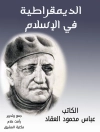A new theology of ultimate realities and a new theory of religion to back it up addressed to believers, unbelievers, and scholars of all traditions.
Finalist for the 2015 John N. Findlay Award in Metaphysics presented by the Metaphysical Society of America
Robert Cummings Neville offers a new theology of the ultimate and a new theory of religion to back it up. The first volume in a trilogy, this book and companion volumes treating existence and religion advance a systematic philosophical theology to address first-order questions found in the array of Axial Age religions. Questions generally arising in the major religious traditions are interrogated with a dialectic of philosophical approaches. This volume begins the project with a consideration of ultimacy defined philosophically and illustrated in a wide range of traditions. To the question of how or why there is something rather than nothing, Neville answers with an elaborate hypothesis about the ontological act of creation that creates all determinate things as related to but different from one another. The result is the claim that there are five ultimates: the ontological act, the form of determinate things, the components of determinate things, the existential location of determinate things relative to one another, and the value-identity of ultimate things, giving rise to five universal religious problematics of ultimacy respectively: the question of existence, the ground of obligation, the quest for wholeness, engaging others, and finding meaning. Neville analyzes what can and cannot be known about each of these ultimates. Readers will find Neville’s theory of religion and philosophy a bold one, running counter to dominant trends while richly informed by a long and fruitful engagement with theology, philosophy, and religion, East and West.
İçerik tablosu
Cross References
Preface
Acknowledgments
Introduction
I. The Hypothesis
II. Defining Religion
III. Identifying Religion in Public Discourse
IV. Distinguishing Marks of Philosophical Theology
Part I. Ultimates Defined
Part I. Preliminary Remarks
1. Sacred Canopies
I. A Theory of Sacred Canopies
II. Finite/Infinite Contrasts
III. World-Defining Human Problems
IV. Truth in Sacred Canopies
2. Reference, Reduction, Philosophy, and Metaphysics
I. The Presupposition of Real Reference
II. The Scientific Bracketing of Real Reference
III. Philosophy’s Control for Reductionism
IV. Metaphysics Explained and Defended
3. Symbolic Engagement
I. Interpretation as Engagement
II. The Pragmatic Heritage
III. Iconic, Indexical, and Conventional Reference in Extension and Intention
IV. Engaging Finite/Infinite Contrasts
4. Worldviews
I. Orientation and Worldviews: The Sacred/Mundane Continuum
II. The Transcendence/Intimacy Continuum
III. The Sophistication/Popular Culture Continuum
IV. The Existential Continua: Sharing, Comprehensiveness, Intensity
Part I. Summary Implications
Part II. Ultimates Symbolized
Part II. Preliminary Remarks
5. Ultimate Reality and Ultimate Concern
I. Ultimate and Proximate Concerns
II. Ultimacy and Dialectic
III. Ultimate Concern as a Function of True Ultimacy
IV. Tensions along the Worldview Continua
6. Toward Transcendent Symbols of Ultimacy
I. Scale
II. Idolatry
III. Explanation: Metaphysics
IV. Experience
7. Toward Intimate Symbols of Ultimacy
I. Nature’s Depths
II. The Uncanny Familiar
III. Human Meaning
IV. Human Correction
8. Ultimacy in Theological Framing: Ontology and Narrative
I. Narrative of the Divine
II. Narrative of the People
III. The Symbolic Falsehood of All Narratives
IV. Living with Broken Narratives and Humanized Transcendents
Part II. Summary Implications
Part III. Ultimates Demonstrated
Part III. Preliminary Remarks
9. The Metaphysics of Ontological Ultimacy
I. Ultimate Reality, Being, and the Problem of the One and the Many
II. Whether Being Is One or Many
III. Whether Being Is Analogical or Univocal
IV. Whether Being Is Determinate or Indeterminate
10. The Metaphysics of Cosmological Ultimacy
I. Determinates as Harmony: Essential and Conditional Components
II. Transcendental Elements of Harmony: Form and Components
III. Transcendental Elements of Harmony: Existential Location
IV. Transcendental Elements of Harmony: Achieved Value-Identity
11. Proof of an Ultimate Ontological Creative Act
I. Radical Contingency and the Ontological Context of Mutual Relevance
II. Proof of an Ontological Creative Act
III. The Determinate World as the End of the Act
IV. Abyss in the Act: Symmetry of the Concept versus Asymmetry of What Is Conceived
12. The Ontological Ultimate: An Act of Creation
I. The Nature of the Ultimate Act as Created
II. The Eternity of Creation
III. Time and Eternity in the Three Modes of Time
IV. Eternity as Ontological and Cosmological Ultimate Reality
Part III. Summary Implications
Part IV. Ultimates Known
Part IV. Preliminary Remarks
13. What Can Be Known about Ultimacy
I. The Ultimate as Modeled: God, Consciousness, Emergence
II. Ultimacy and the Transcendentals: Form, Components, Existential Location, Value-Identity
III. Eternity and the Divine Life
IV. Ultimacy in Extension and Intension
14. What Cannot Be Known about Ultimacy
I. The Ultimate Has No Intrinsic Nature apart from Creation
II. The Ultimate and Other Possible Worlds
III. The Ultimate is Not a Person
IV. The Ultimate and Intelligibility
15. Symbolic Engagement as Praying the Ultimate
I. Theological Understanding as a Sign
II. Multiple Symbols along the Sophistication/Popular Religion, Transcendence/Intimacy, and Sacred/Mundane Continua
III. Systematic Thinking for Controlling Symbols
IV. Thinking the Ultimate
16. Mystical Engagement
I. The Path of Meditation: Nondualism
II. The Path of Contemplation: Suchness
III. The Path of the Mystical Abyss
IV. The Path of Love
Part IV. Summary Implications
Notes
Bibliography
Index
Yazar hakkında
Robert Cummings Neville is Professor Emeritus of Philosophy, Religion, and Theology at Boston University. His many books include Metaphysics of Goodness: Harmony and Form, Beauty and Art, Obligation and Personhood, Flourishing and Civilization, also published by SUNY Press.












